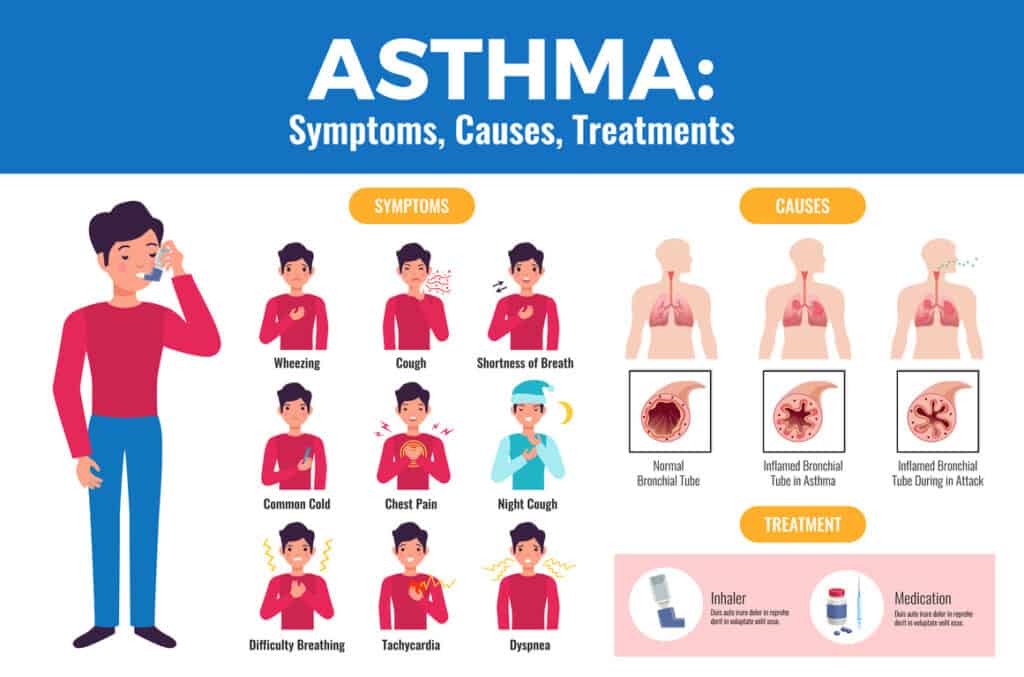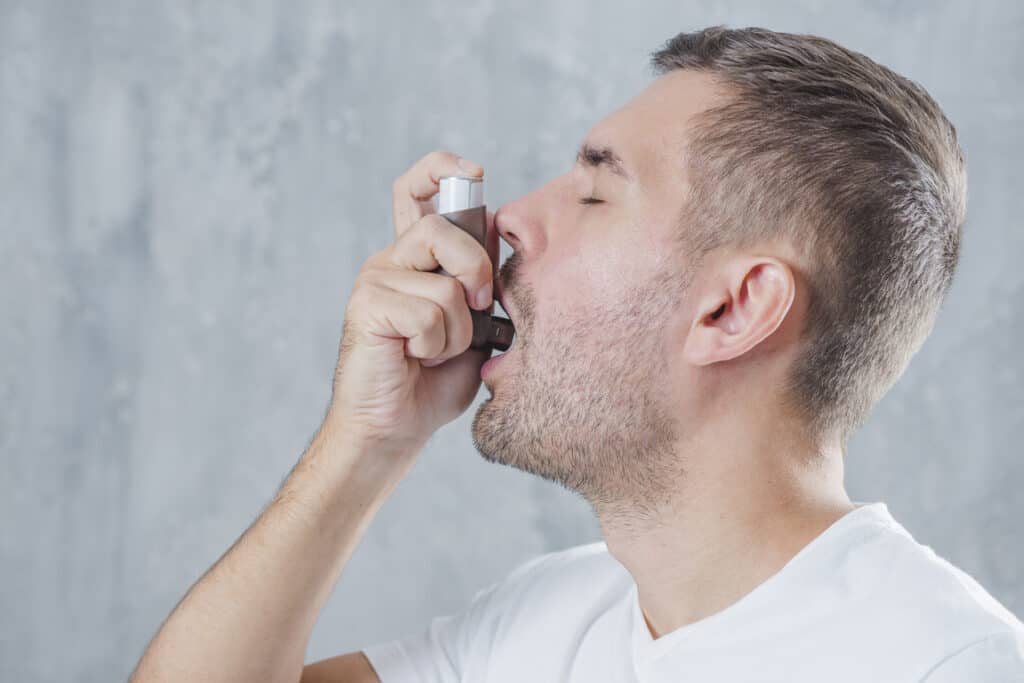Unfortunately, asthma is a chronic condition for which there is no cure. The best treatments are aimed at controlling the disease. What constitutes good “control” over asthma? Asthma treatments are deemed effective if the treatment provides relief from troublesome symptoms including coughing and shortness of breath; minimal need for quick-relief medicine; minimal disturbance during the night, allowing for normal sleeping habits; and overall healthy lung and respiratory function.
Two Types of Asthma Treatments

Long-term asthma medications are effective in reducing airway inflammation, which helps to prevent asthmatic symptoms from developing. Inhaled corticosteroids are the most commonly prescribed long-term asthma treatment. These inhaled corticosteroids control asthma by decreasing inflammation and sensitivity to other inhaled substances. One common side effect from these inhaled corticosteroids is “thrush”, a mouth infection. Rinsing one’s mouth out with water after inhaling the corticosteroids can reduce one’s risk for developing thrush.
Other types of long-term asthma treatments include: Cromolyn (a medicine taken using a nebulizer), Omalizumab (a medicine injected via a shot once or twice a month), Inhaled long-acting beta2-agonists (inhaled medications that open the airway), Leukotriene modifiers (pills that reduce inflammation), and Theophylline (pills that reduce inflammation).
Quick-relief asthma treatments are necessary when a person’s asthma symptoms flare up. Quick-relief options work quickly to relax tense muscles around the airway, letting the airway open up while allowing for air to flow through easily. It is recommended to carry the quick-relief inhaler at all times, in case a flare up occurs.
Using a Peak Flow Meter

It is important for persons with asthma to keep track of symptoms, check peak flow regularly, and adhere to physician recommendations. People with asthma should use a peak flow meter, a relatively inexpensive device, to keep track of asthmatic symptoms. A peak flow meter is a portable, handheld device that measures how well air moves out of the lungs. A person using a peak flow meter should blow into the device and record the number or peak flow measurement; this number indicates how well the lungs are functioning when the person blew into the device. Recording one’s peak flow numbers can help to inform the doctor about which medications to take, how often, and the quantity of the medication. Knowing a “personal best” peak flow number is important to know and to share with healthcare professionals as this “personal best” as it helps to track how well the medications are controlling asthmatic symptoms. The peak flow records provide information that can potentially eliminate an asthma attack – if a person notices his/her peak flow numbers are decreasing and that it feels more strenuous to breathe, it is recommended to take a quick-relief medication as indicated by a healthcare professional. After taking the quick-relief medication, taking note of your peak flow number can provide useful information regarding how well the quick-relief medication worked in controlling your asthma attack.
Treatment Options

All persons with asthma are unique and require an individualized treatment approach. There are special considerations for asthma treatments based on various groups of individuals. Below are FDA-approved medication options for asthma treatment.
Long-term control asthma medications
Inhaled corticosteroids
-fluticasone (Flonase, Flovent HFA)
-budesonide (Pulmicort Flexhaler, Rhinocort)
-flunisolide (Aerospan HFA)
-ciclesonide (Alvesco, Omnaris, Zetonna)
-beclomethasone (Qnasl, Qvar)
-mometasone (Asmanex)
-fluticasone furoate (Arnuity Ellipta)
Leukotrine modifiers
-montelukast (Singulair)
-zafirlukast (Accolate)
-zileuton (Zyflo)
Long-acting beta agonists
-salmeterol (Serevent)
-formoterol (Foradil, Perforomist)
Combination inhalers
-fluticasone-salmeterol (Advair Diskus)
-budesonide-formoterol (Symbicort)
-formoterol-mometasone (Dulera)
Theophylline
-Theophylline (Theo-24, Elixophyllin)
Quick-relief asthma medications
Short-acting beta agonists
-albuterol (ProAir HFA, Ventolin HFA)
-levalbuterol (Xopenex)
Ipratropium
-ipratropium (Atrovent)
Oral and intravenous corticosteroids
Lifestyle Improvements to Reduce Asthma Attacks
Use an air conditioner + dehumidifier: Air conditioners reduce the particles of pollen from trees, grasses, and weeds that circulate indoors. The decrease in humidity, due to an air conditioner, can also reduce the presence of dust mites. If a person with asthma lives in a damp, humid climate, he/she should ask a medical professional about using a dehumidifier to improve humid conditions inside the home.
Clean home décor: Investing in dust proof covers may improve asthma symptoms. Changing rugs out for hardwood floors may prevent dust or other asthma triggers from gathering as easily inside the home. Change bed sheets, blankets, and pillowcases regularly to decrease the likelihood of nighttime asthma episodes. Cleaning the entire house – bathroom, kitchen, bedrooms, living room, etc. – can decrease the chance of mold spores developing which can reduce asthmatic outbreaks. Irritants such as pollen, mold, cold air, and pollution can also gather on household items, making it even more important to clean regularly.
Avoid furry pets: Some persons with asthma are sensitive to pet dander and should therefore avoid pets with fur or feathers. If a person already has these types of pets, it’s recommended to have the pets groomed or bathed regularly in order to decrease the amount of dander in the home.
Get vaccinated regularly: Remaining current with vaccinations can prevent unwanted illnesses such as the flu or pneumonia – which can trigger asthma attacks.
Follow the doctor’s instructions:
It’s important for people with asthma to regularly measure peak flow, take medications as prescribed by the doctor, stop activities that are likely to induce an asthma attack, and maintain open lines of communication with a doctor about adjusting treatment options to better suit personal lifestyle factors.





